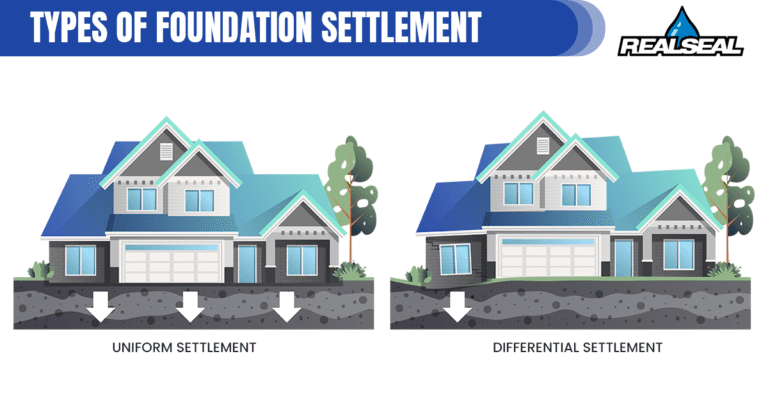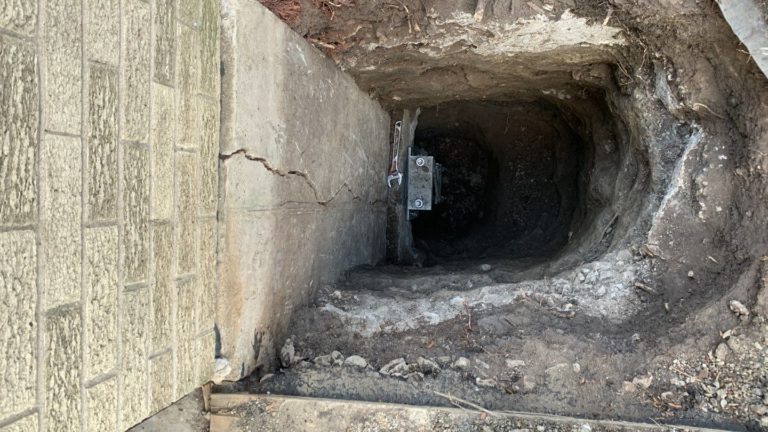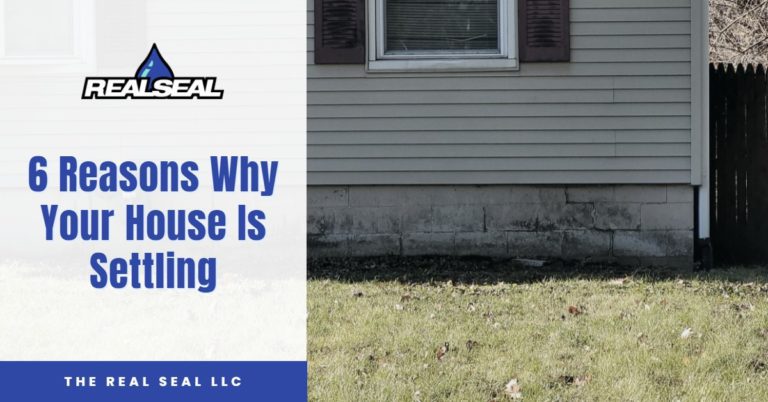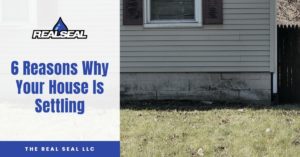Why is your house settling? If you’re noticing wall cracks, floor cracks, sticking windows and doors, and other strange occurrences, there’s a chance your house may be settling. Don’t go anywhere. This is the article you need! Here we’re going to talk about what house settling is, signs your house is settling, six reasons your house is settling, and how to repair house settling.
What Is House Settling?
There are two types of settling that can affect your home: uniform and differential.
Uniform settlement – Uniform settlement is when your home slightly settles into the soil after it’s first built. It’s called “uniform” because your home should settle in an even, uniform manner. As long as the settlement stays under fractions of an inch, your home should be fine.
Differential settlement – Differential settlement is when sections of your home settle at different rates. Differential settlement can put stress on your home’s foundation, leaving you with a variety of problems, such as sticking windows and doors, bowing walls, and structural cracks.

Signs Your House Is Settling
Here’s a few different signs that your house is settling.
- You have multiple sticking doors and windows – If you’re noticing many of your doors and windows are not closing properly, your house could be settling.
- Your floors are bowing – Pay attention to any bowed, sunken, or uneven flooring. This could be a sign your house is settling.
- Your walls and floors are separating – Even the most minor separations could indicate your house is settling.
- Your floors are beginning to crack – If you notice floor cracks that run from one wall to another, your house could be settling.
- Your walls are bowing – If your walls are bowing, cracking, sheering, or leaning, your house might be settling.
- Your wallpaper is tearing – Look behind any torn wallpaper to check if the wall behind is cracked.
- Your walls are rotating – Wall rotation is when the outside of your foundation sinks deeper into saturated soil. Then, if the inside edge of your foundation that sits on drier soil pulls up, your walls can begin to rotate.
- You have diagonal cracks running from the corners of doors and windows to the ceiling – If these cracks are under 1/10 of an inch wide, they could be the result of uniform settling. If the cracks are larger than 1/10, your house could be suffering from differential settlement.
- Your moldings have separated – House settlement can cause your floors, ceilings, and walls to move separately.
- You have stair-step cracks in your brick or masonry – You may find these cracks in concrete block walls or brick facia above your basement.
- Your chimney or porch is separating from the rest of your home – This might be related to a problem with the foundation under the chimney or porch. Have a professional look at it to make sure it isn’t caused by a problem with your home’s foundation.
6 Reasons Why Your House Is Settling
Below are six reasons why your house is settling.
- Buried material is degrading – If your foundation was poured over buried construction or organic material, such as plywood or tree roots, and that material degrades, voids and pockets could form.
- Your soil was improperly backfilled/compacted – Before your foundation is poured, builders must excavate the ground to make way for construction. If the builders took out too much dirt from the site, they have to replace and compact the soil. Failing to compact the soil properly can cause your house to settle.
- Existing soil conditions – If your builder ignores existing subsurface soil conditions, such as expansive soil, your house could settle. Expansive soil is clay-rich soil that swells when it gets wet and shrinks when it dries. The constant growing-contracting cycle puts stress on your foundation and may cause your home to settle.
- Soil erosion – If you don’t have a proper drainage system to prevent pooling around your foundation, water can wash away the soil under your home.
- Large trees and roots – Tree roots can drink and dry out your soil, forming pockets underneath your home.
- Soil creep – Soil creep, also known as downhill creep, is when soil slides down a hill and causes lateral movement against your foundation. Soil creep usually occurs during and after rain.
How To Repair House Settling
Below are two of the best solutions for repairing house settlement.
Steel push piers – Steel push piers are one of the best ways to counter differential settlement. Push piers are pushed deep into the soil under your foundation until they reach load-bearing soil. After all, it’s the soil under the foundation that’s causing your house to settle. Then, hydraulic jacks lift your foundation and home back to the maximum practical level (the ultimate amount of foundational lift achievable before causing structural or cosmetic damage to your home).
Helical piers – Helical piers, also known as screwpiles, work similar to steel push piers. But, instead of being pushed into your soil, they are twisted like corkscrews until they find load-bearing soil. Then, hydraulic jacks lift your foundation and home back to the maximum practical level.
Learn more about underpinning.

The Real Seal
If you live in the Greater Chicago area and your house is settling, who do you call? Get in touch with The Real Seal. Call us today, and we’ll get you started with an in-depth inspection, free repair estimate, and a list of our finest solutions. We also provide basement waterproofing, crawl space encapsulation, crawl space repair, concrete leveling, and more.






